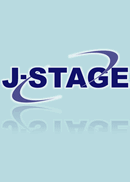Volume 38, Issue 1
Displaying 1-6 of 6 articles from this issue
- |<
- <
- 1
- >
- >|
Preface
-
2019Volume 38Issue 1 Pages 1
Published: June 10, 2019
Released on J-STAGE: July 04, 2019
Download PDF (130K)
Research Note
-
2019Volume 38Issue 1 Pages 2-13
Published: June 10, 2019
Released on J-STAGE: July 04, 2019
Download PDF (1574K)
Reports
-
2019Volume 38Issue 1 Pages 14-19
Published: June 10, 2019
Released on J-STAGE: July 04, 2019
Download PDF (941K) -
2019Volume 38Issue 1 Pages 20-26
Published: June 10, 2019
Released on J-STAGE: July 04, 2019
Download PDF (1157K) -
2019Volume 38Issue 1 Pages 27-31
Published: June 10, 2019
Released on J-STAGE: July 04, 2019
Download PDF (706K)
Series
-
2019Volume 38Issue 1 Pages 32-34
Published: June 10, 2019
Released on J-STAGE: July 04, 2019
Download PDF (302K)
- |<
- <
- 1
- >
- >|
